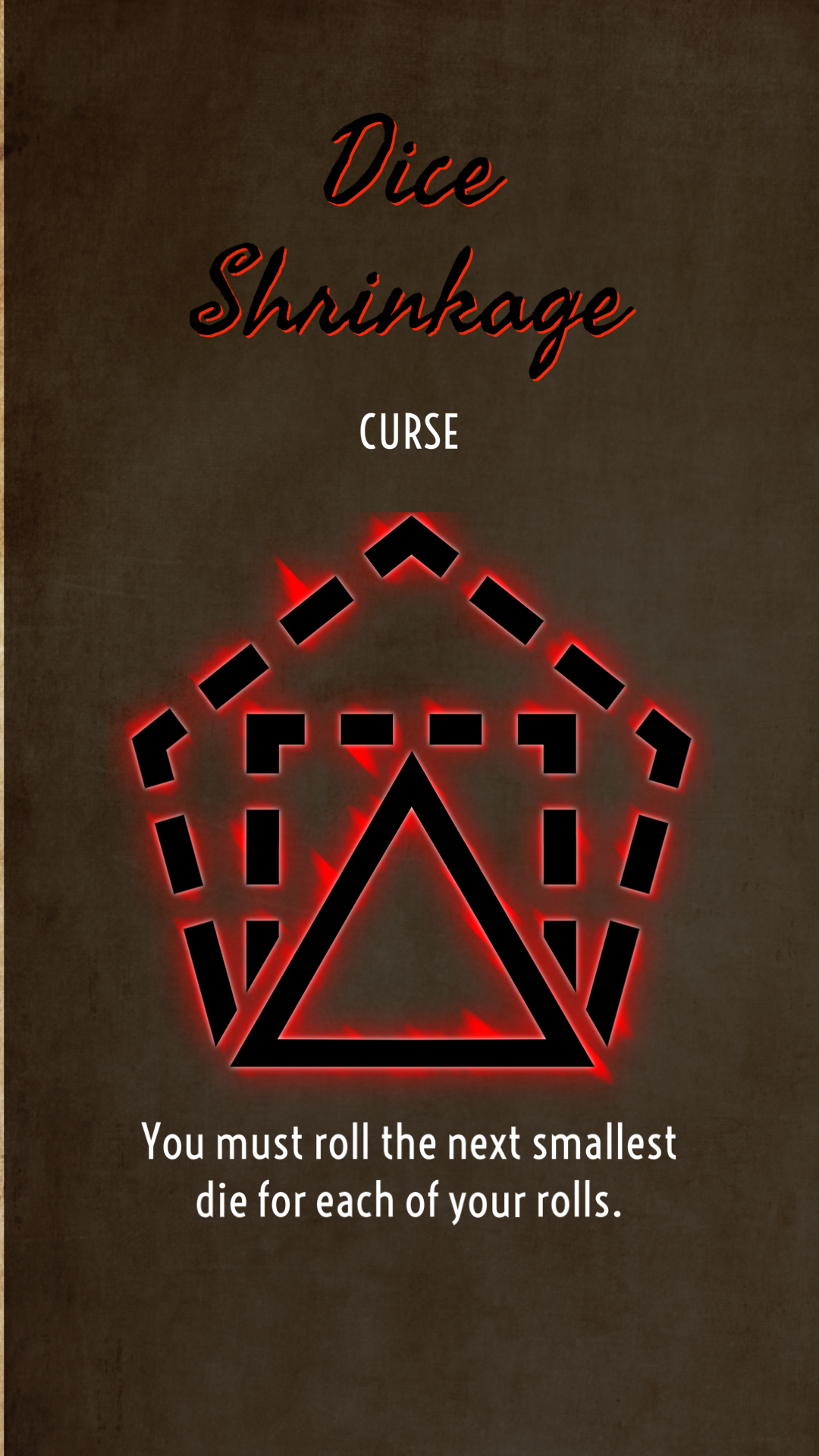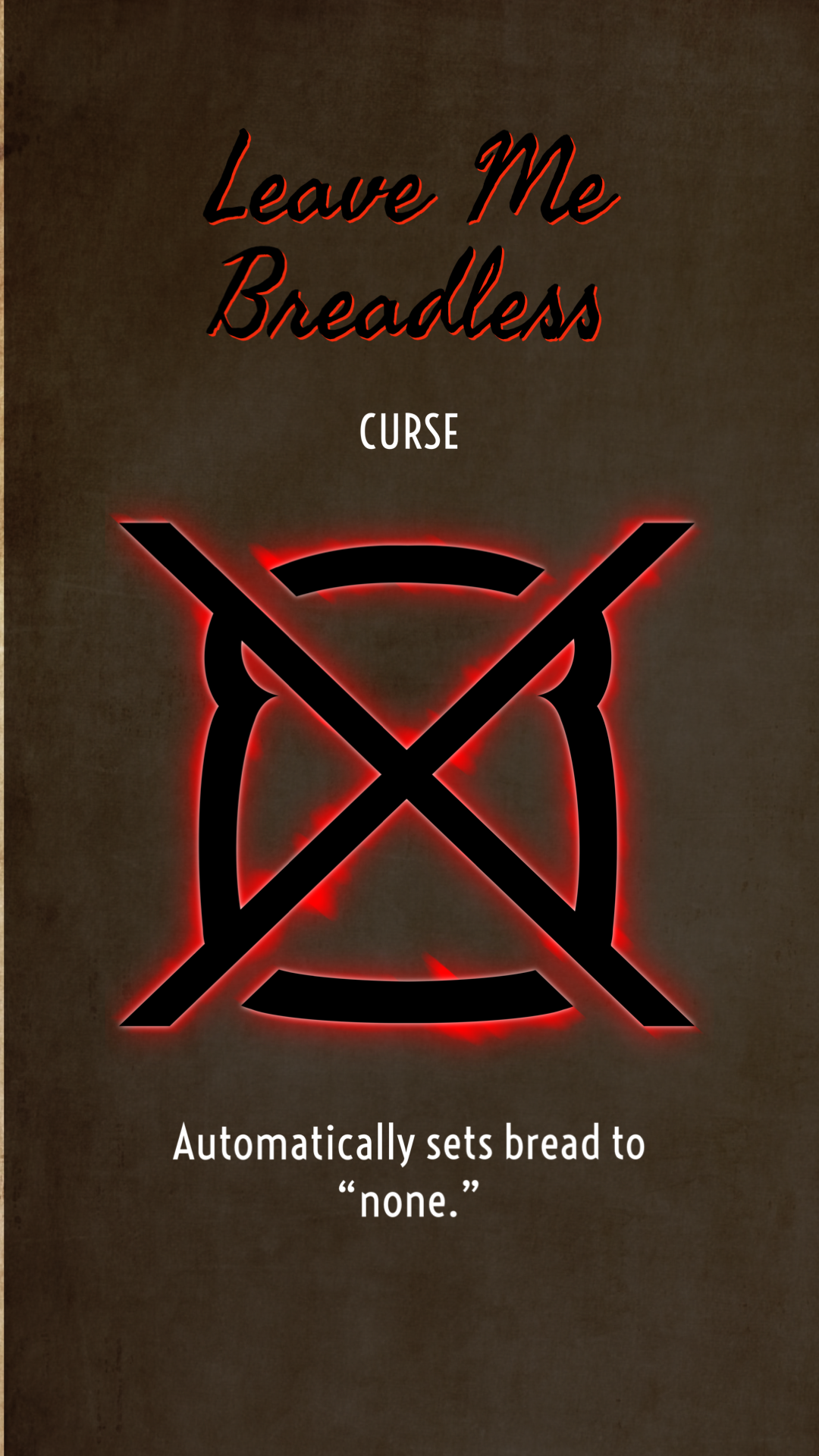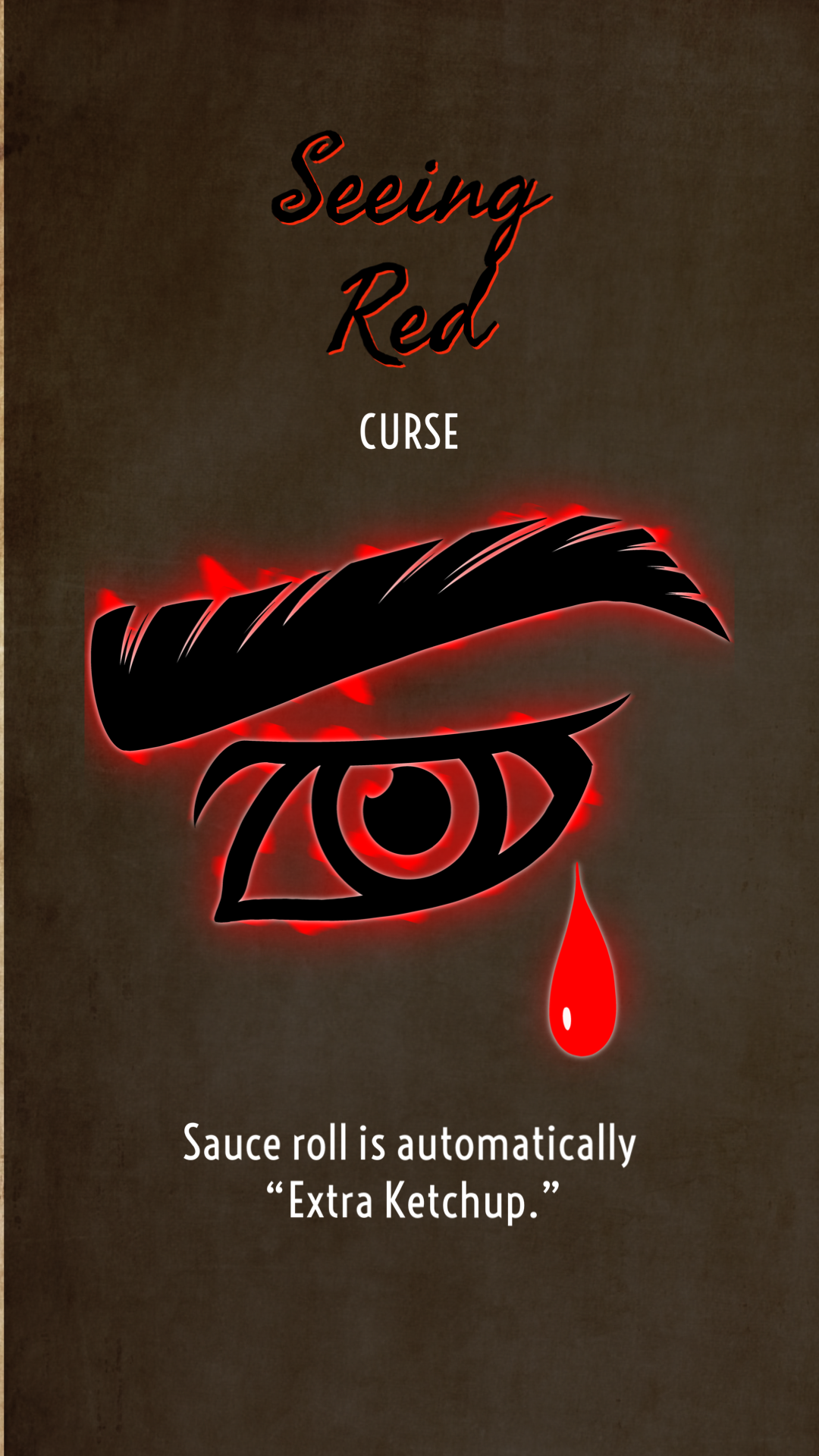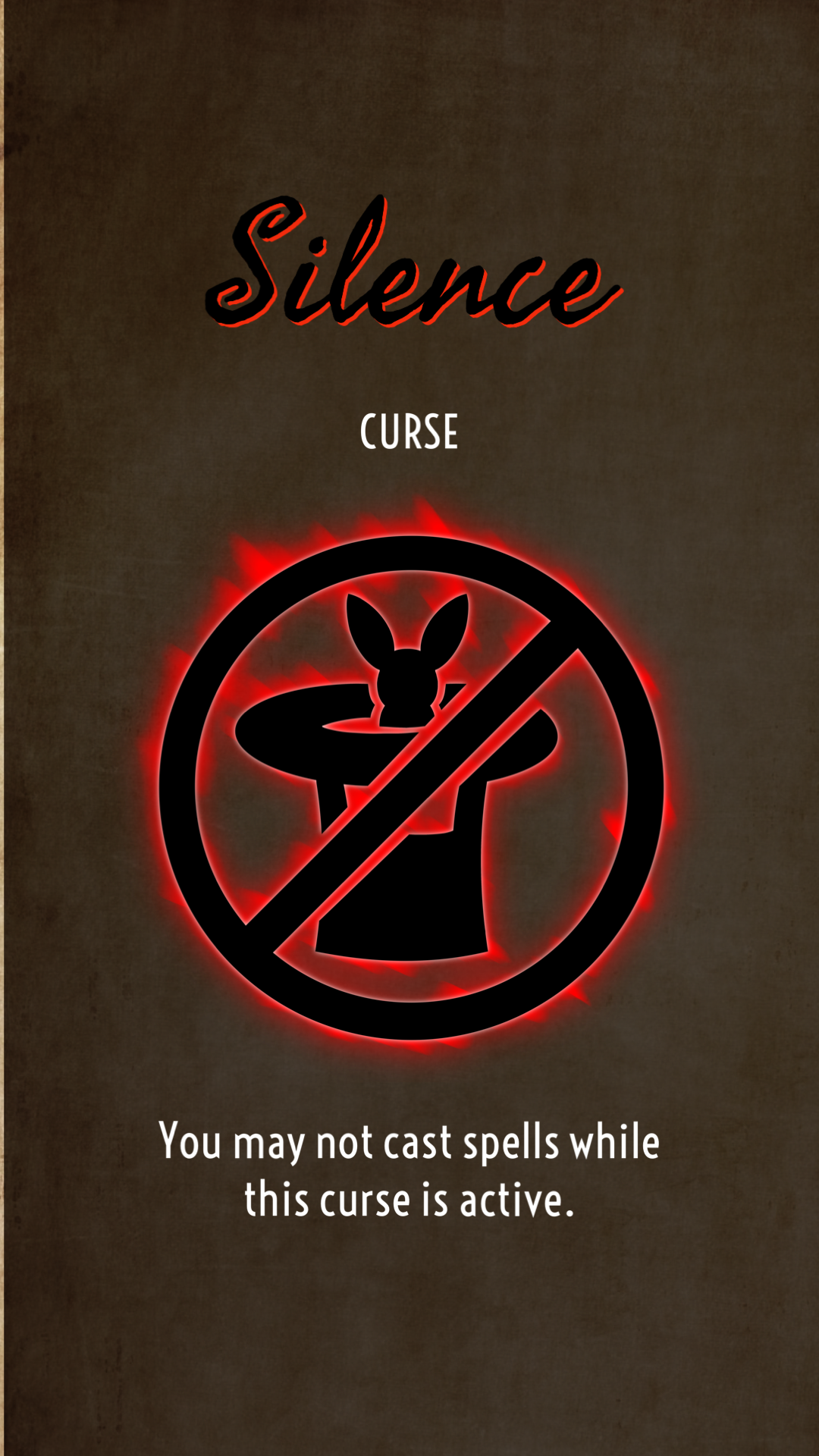
Leaving your culinary fate up to the whims of a couple of dice every other day for lunch is risky. It is not without reward, but the lows can get quite low…
Fortunately, our brave adventurer has a few tricks up his sleeve, in the form of castable spells, that can sometimes lessen the blow when the proverbial hammer falls… but not always! There must always be balance— as our hero grows stronger, new curses emerge to wage the sandwich war anew.
written in the stars, sealed between the bread

THE Core RULES
1. Minimize Food Waste.
This rule guides most decisions made on the show. I use up leftovers. I eat bread out of the freezer. Some food options may recur a bit before they are phased out, allowing me to go through my stock and use up what I have. Food is a valuable resource that not everyone has access to, and so, even though I have fun with food and with the concept of a sandwich, I always respect food, as well as the cultures and people that produced it.
2. Eat the Entire Sandwich.
No good story is free from conflict, and the same goes for Roll for Sandwich. Part of what makes the show compelling is the possibility of failure and the reality of consequences. There needs to be an element of risk to give victories and failures weight. Knowing that the entire sandwich must be consumed in the end adds gravitas to each successive roll.
3. Construct the Sandwich in Order.
At its core, Roll for Sandwich is modeled after D&D. During a battle in D&D, turns last for 6 seconds of in-game time, in which you can take one action (and sometimes slightly more.) I consider each stage of building the sandwich (rolling for meat, cheese, etc.) it’s own turn, happening in chronological order. I cannot rearrange the sandwich because I cannot see the future— Yes, maybe sauce would have been good on the bottom piece of bread, or a different order of build would lead to a more cohesive or structurally sound sandwich. Still, alas, the power of time-travel is not a skill that I have access to, so I must proceed in the order the dice dictate.

Spells & Curses
THE SECRETS OF THE SPELLBOOK REVEALED
Spells give our hero a way to fight back against the tide of chaos by giving them the ability to invoke special effects that alter the results of fate’s choosing. This means that spells can supersede the core rules of RFS at times, allowing for some flexibility and outside-of-the-box thinking, and hopefully, a better overall sandwich experience for our hero. Because of the power they grant, spells are also limited by resources.
Roll For Sandwich is inspired by Dungeons and Dragons, and spells in RFS function very similarly to how they function in D&D. Spells are divided into 4 levels: Cantrips (Level 0), and Leveled Spells (Levels 1-3 respectively.) To cast a spell, a limited resource called a “Spell Slot” must be used. Just like spells themselves, spell slots have levels and can only be used to cast spells of the same or a lower level. For example, a Level 3 Spell Slot can be used to cast either a level 3, 2, or 1 spell, but a Level One spell slot can only be used to cast a level 1 spell.
Cantrips are weak spells with negligible effects, and thus, they do not require the resource of a spell slot to be cast. Because of this, Cantrips can be cast “at will,” meaning as many times a season as the player wishes, as long as it doesn’t break any other basic rules.
The amount of spell slots the player has available each season is determined by the player’s level (which also corresponds to the number of the current season). As seasons progress, the player gains a few more spell slots. Once all spell slots of a certain level are exhausted for a season, then it is no longer possible to cast spells of that level until the spell slots are refreshed, which happens at the beginning of each new season.

the spellbook
cantrips (Level 0)

You may use this spell to mix a "loose" (shredded, chunky, etc) main with Mayo.
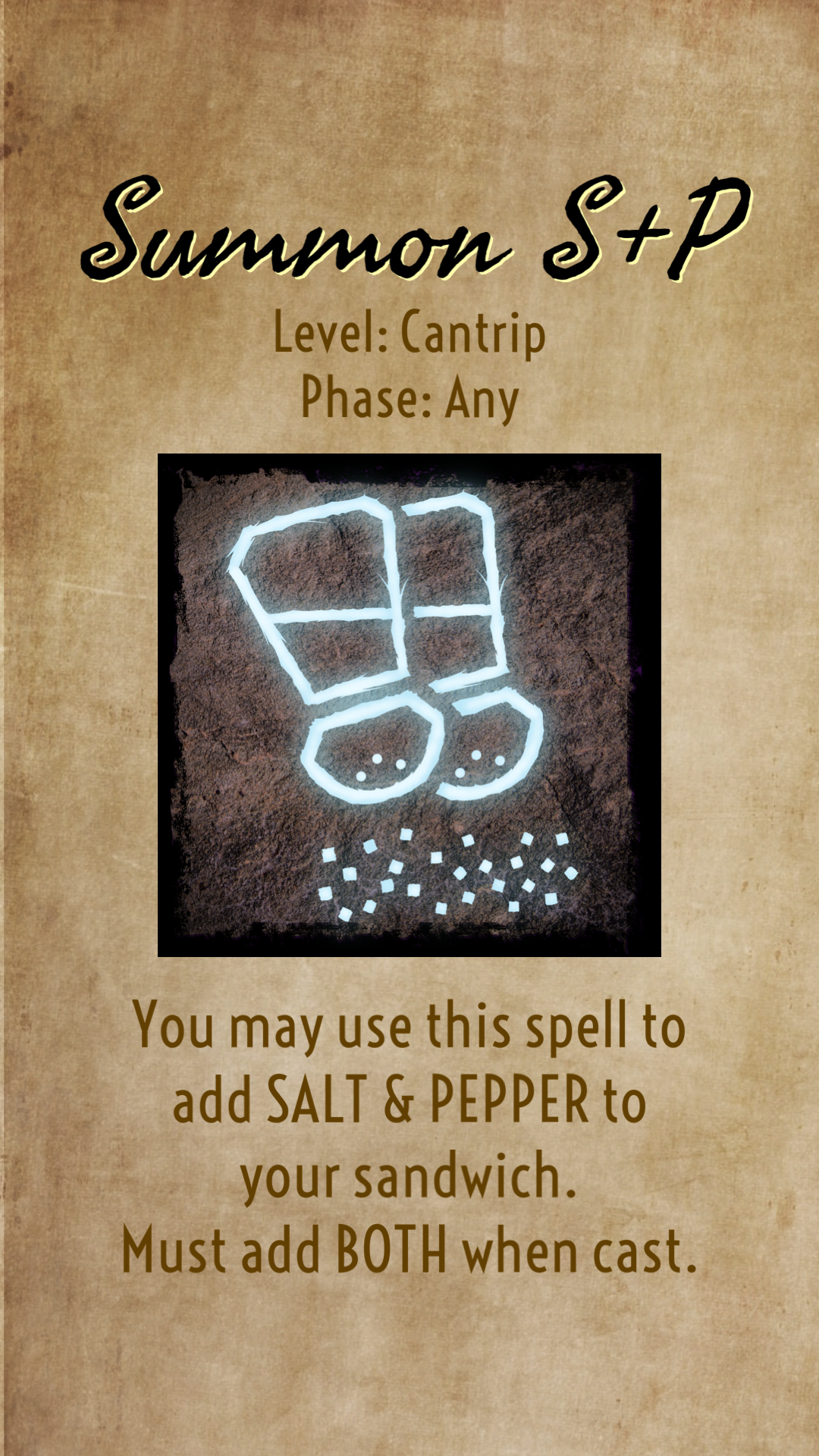
You may use this spell to add Salt & Pepper to your sandwich. You must add both.

You may use this spell to toast your bread before moving on to the main phase.
LEVEL ONE

You may use this spell to butter your bread. Do so before adding your main.

Expand a spell slot and roll a D8: On a 1-7 this spell has no effect. On an 8, you may cancel any one roll result and then this spell is disabled for the rest of the season.

You may use this spell to roll all the dice before assembling the sandwich to determine the optimal assembly process.
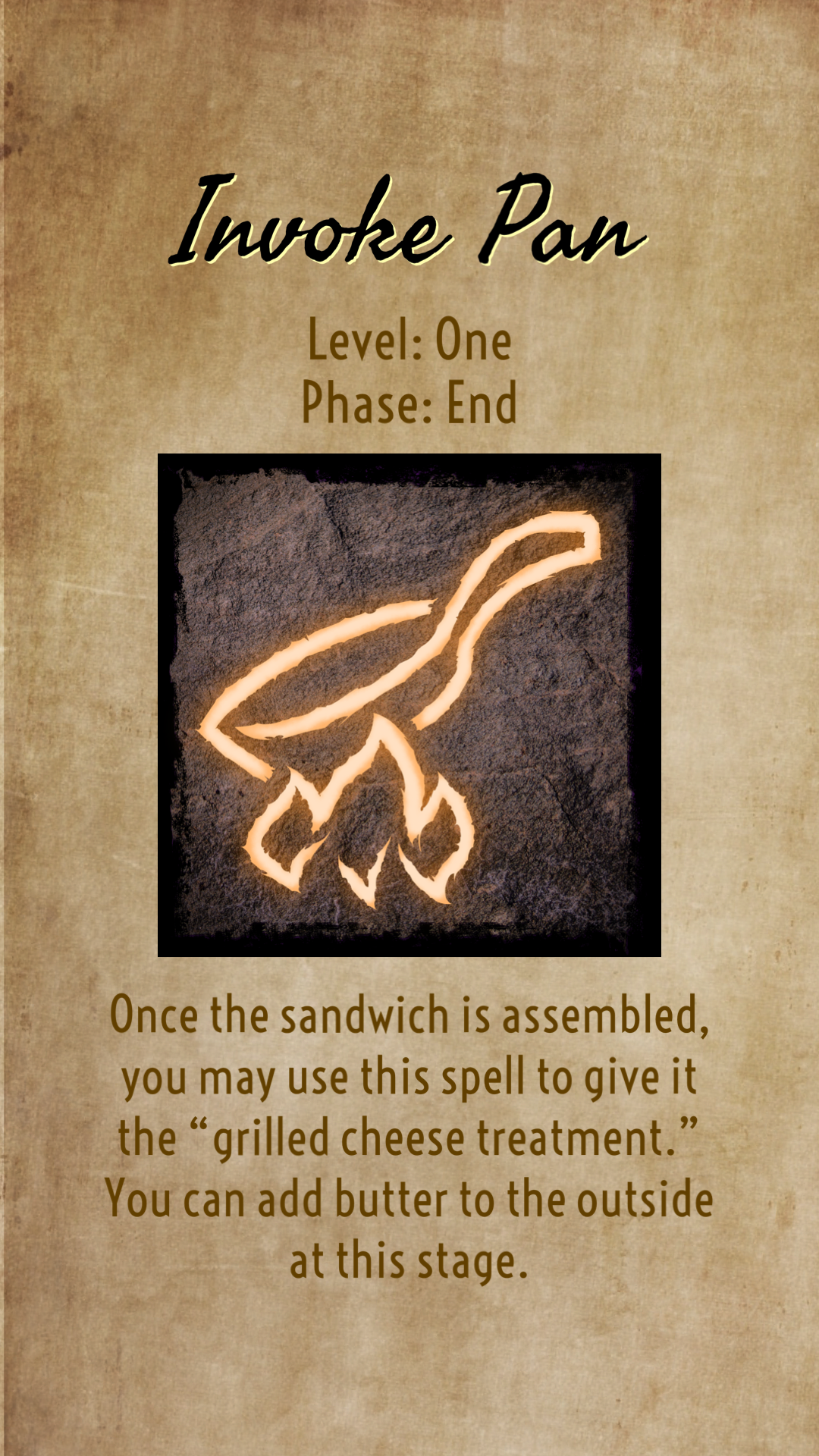
Once the sandwich is assembled, you may use this spell to pan fry the sandwich on the stove. You can add butter to the outside at this stage.
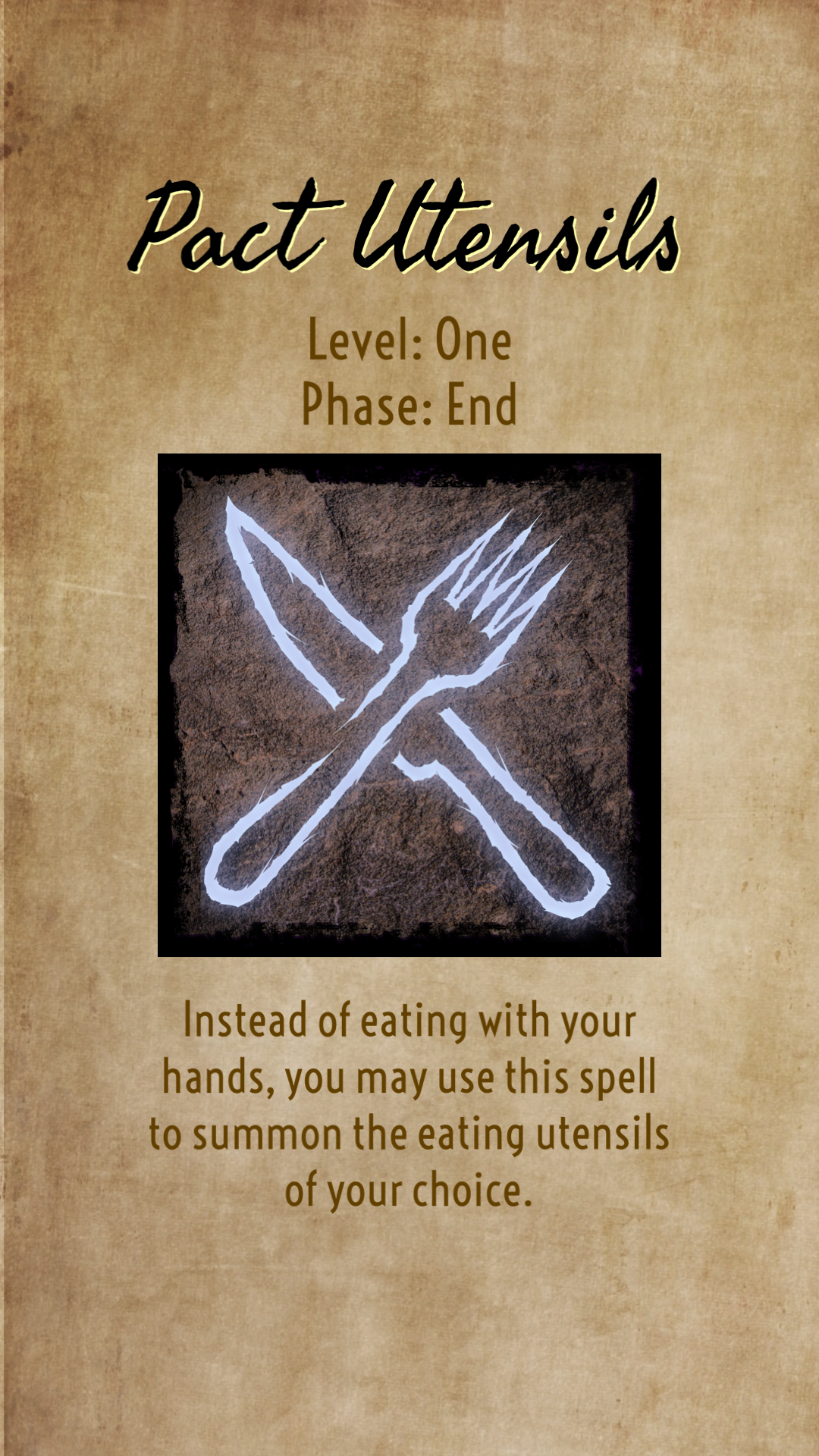
Instead of eating with your hands, you may use this spell to summon the eating utensils of your choice.

You may use this spell to toast your sandwich in a sandwich press.
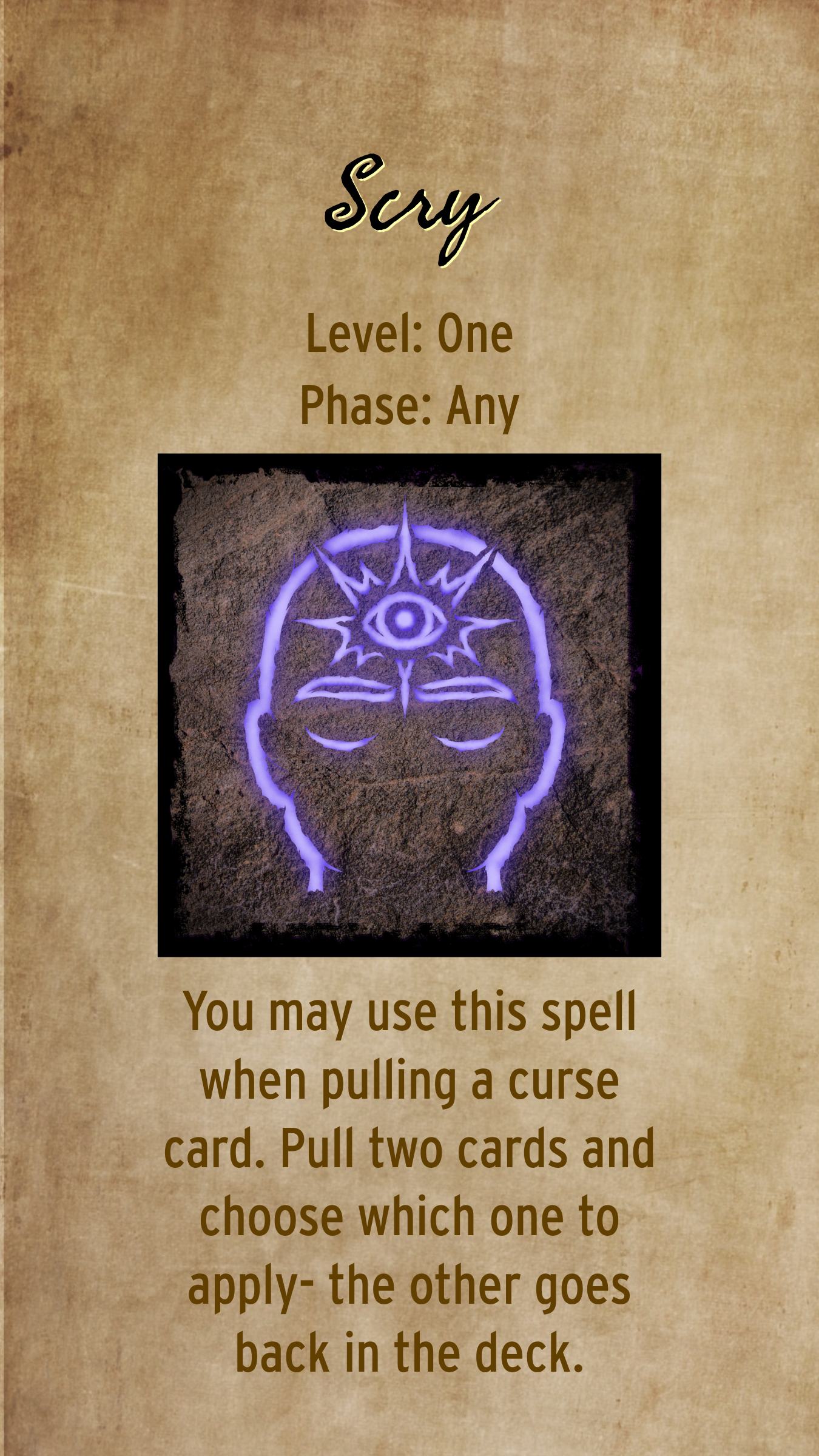
You may use this spell when pulling a curse card. Pull two cards and choose which one to apply- the other goes back in the deck.

You may use this spell to sauté one roughage in a pan. You may upcast this spell to sauté X roughage, where X is the level of spell used to cast.

You may use this spell to roll for a second sauce in addition to your naturally rolled sauce. You may do so with advantage (roll 2 D20 and take the more favorable result.)

You may use this spell to add lettuce to your sandwich at any time.
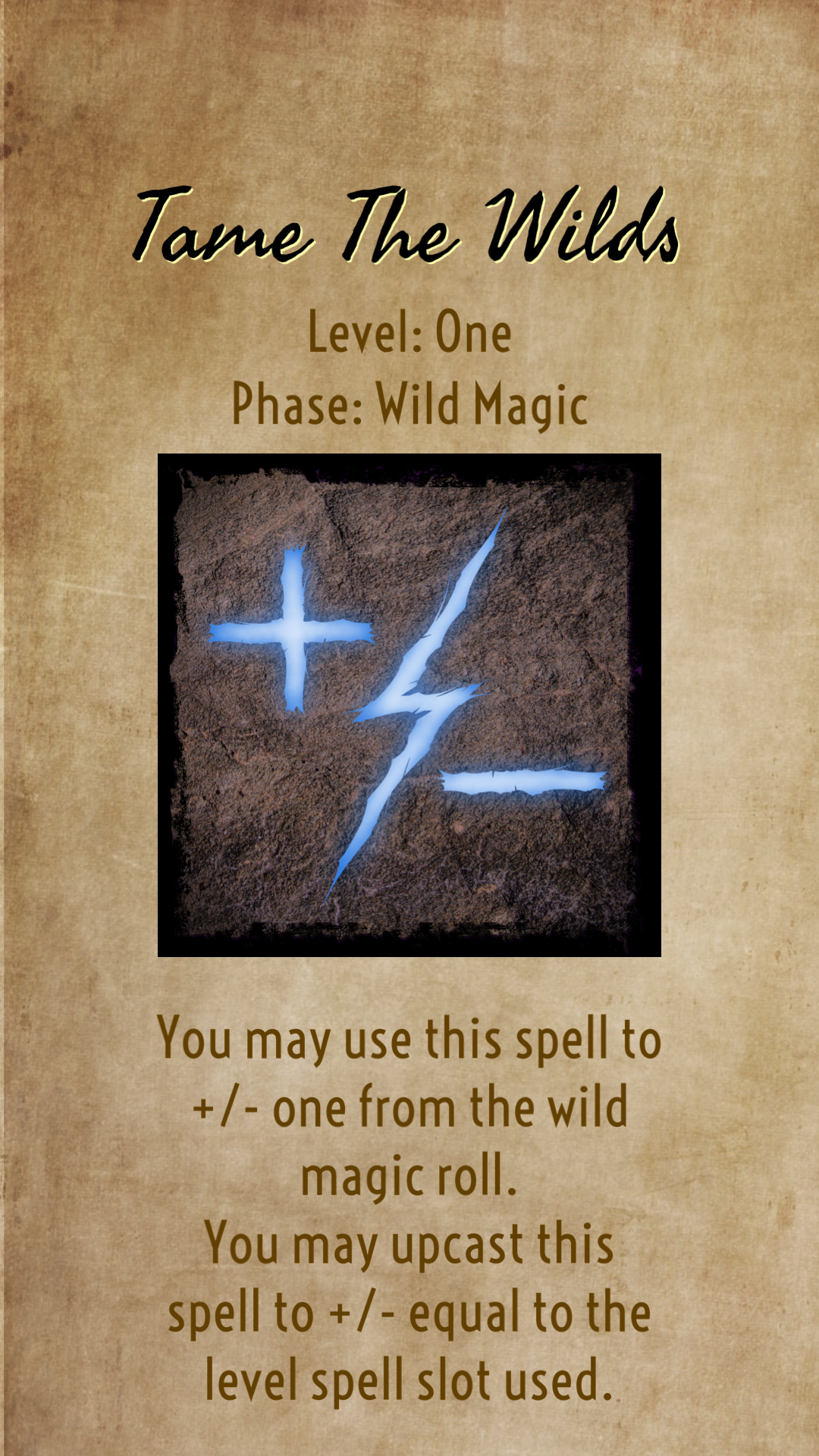
You may use this spell to nudge the Wild Magic dice roll up or down one number. You may upcast this spell to nudge the roll up or down equal to the level of the spell slot used.
LEVEL TWO
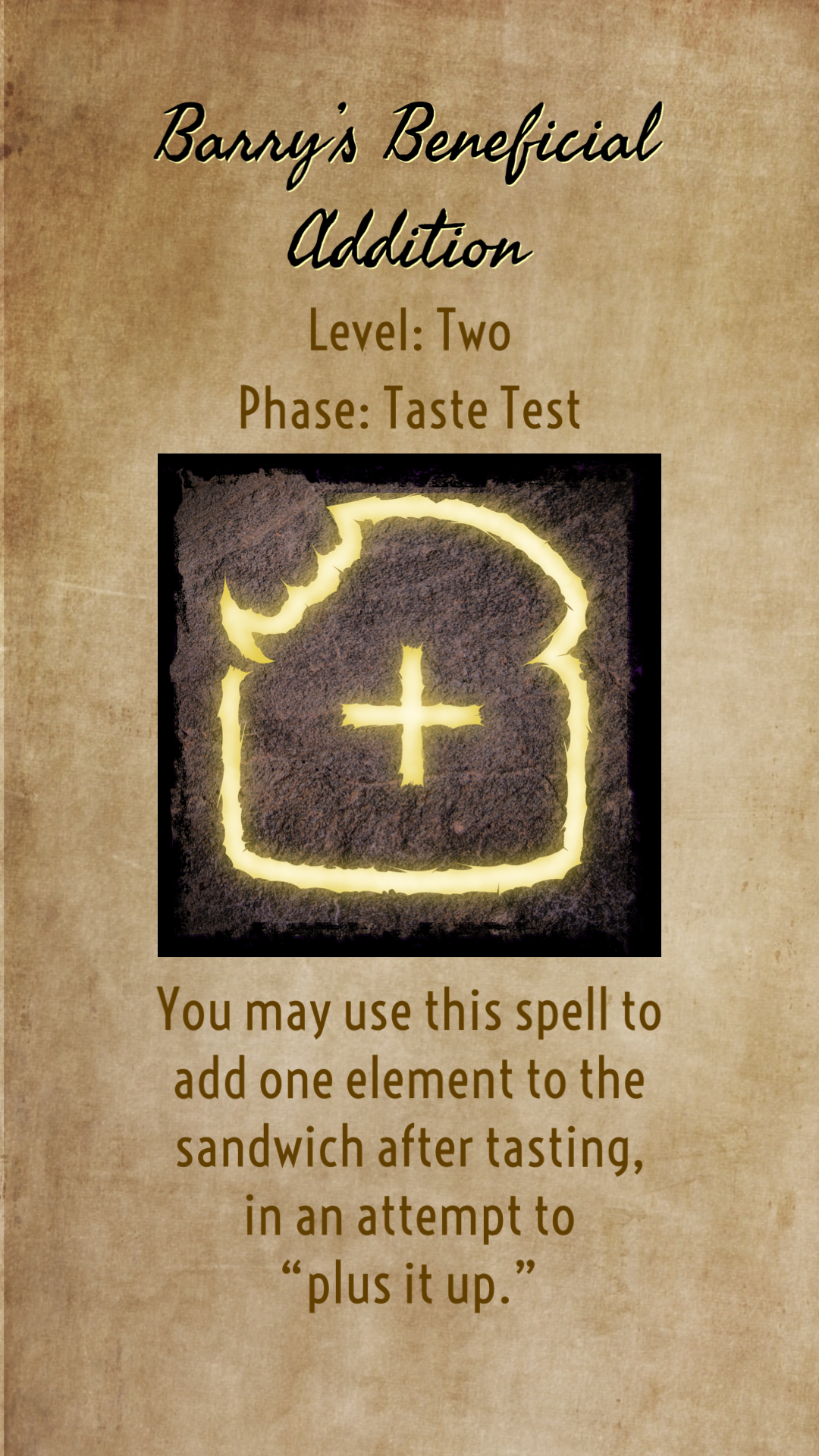
You may use this spell to add one element to the sandwich after tasting in an attempt to "plus it up."
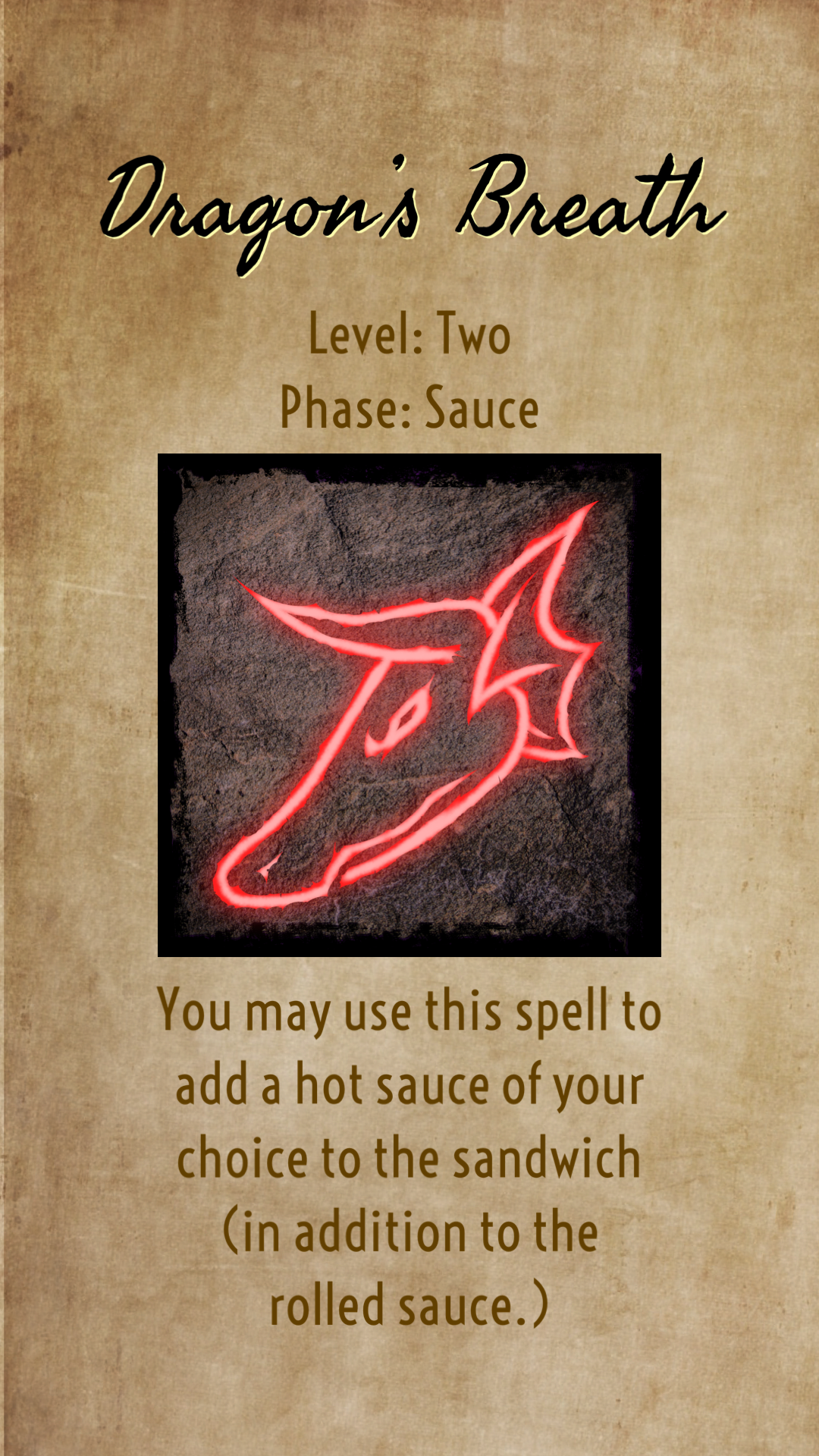
You may use this spell to add a hot sauce of your choice to the sandwich (in addition to your rolled sauce.)

You may use this spell to immediately equip a torch and melt the cheese.

"CURSE" spreads to 1D4 other spots on the roll lists. Roll a D6 each time to determine which sheet.

You may use this spell to replace one of the roughage rolls with a pickled element of your choice.

You may use this spell to add bacon to your sandwich at any point.
LEVEL THREE
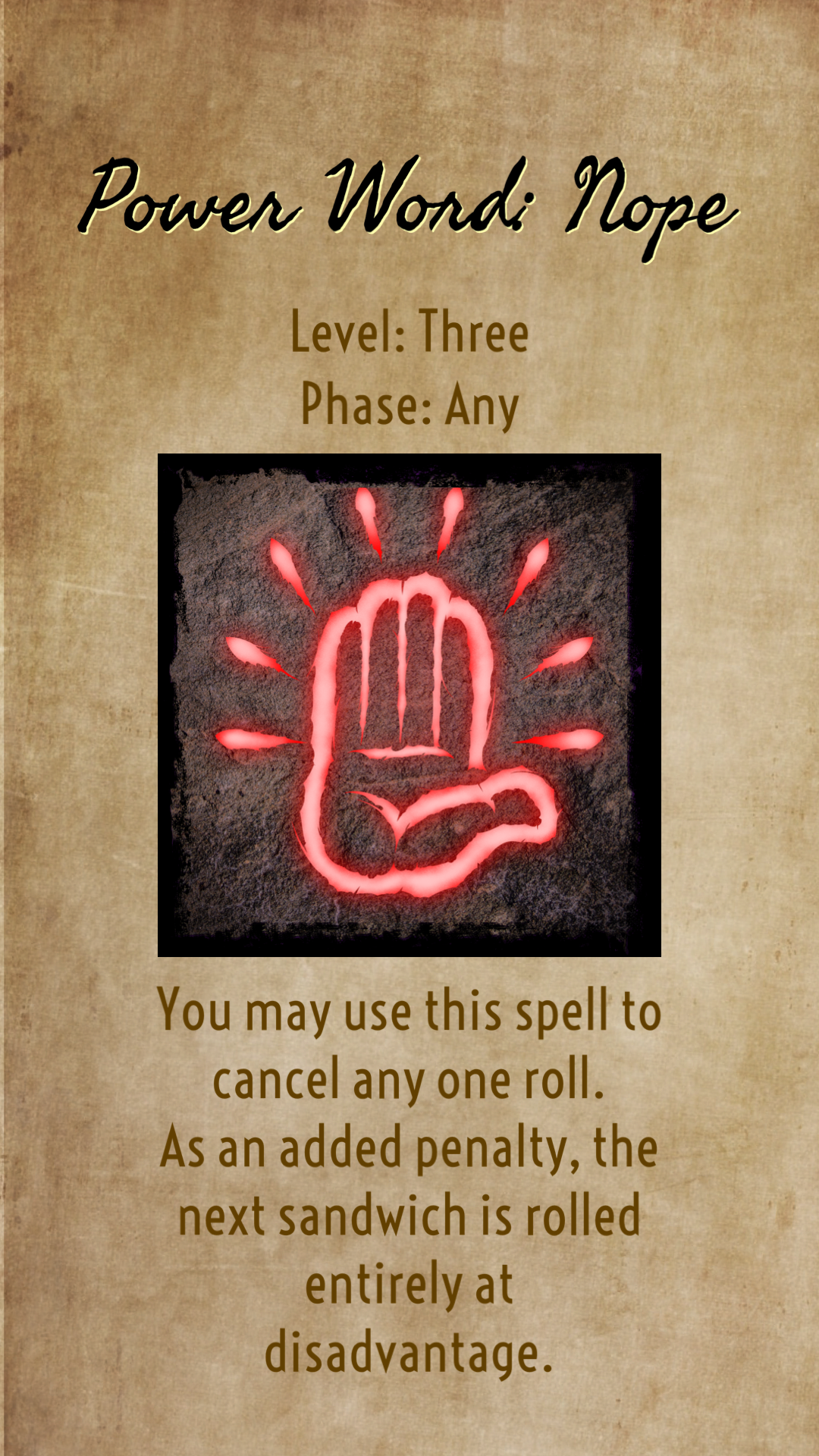
You may use this spell to cancel any one roll. As an added penalty, the next sandwich is rolled entirely at disadvantage.
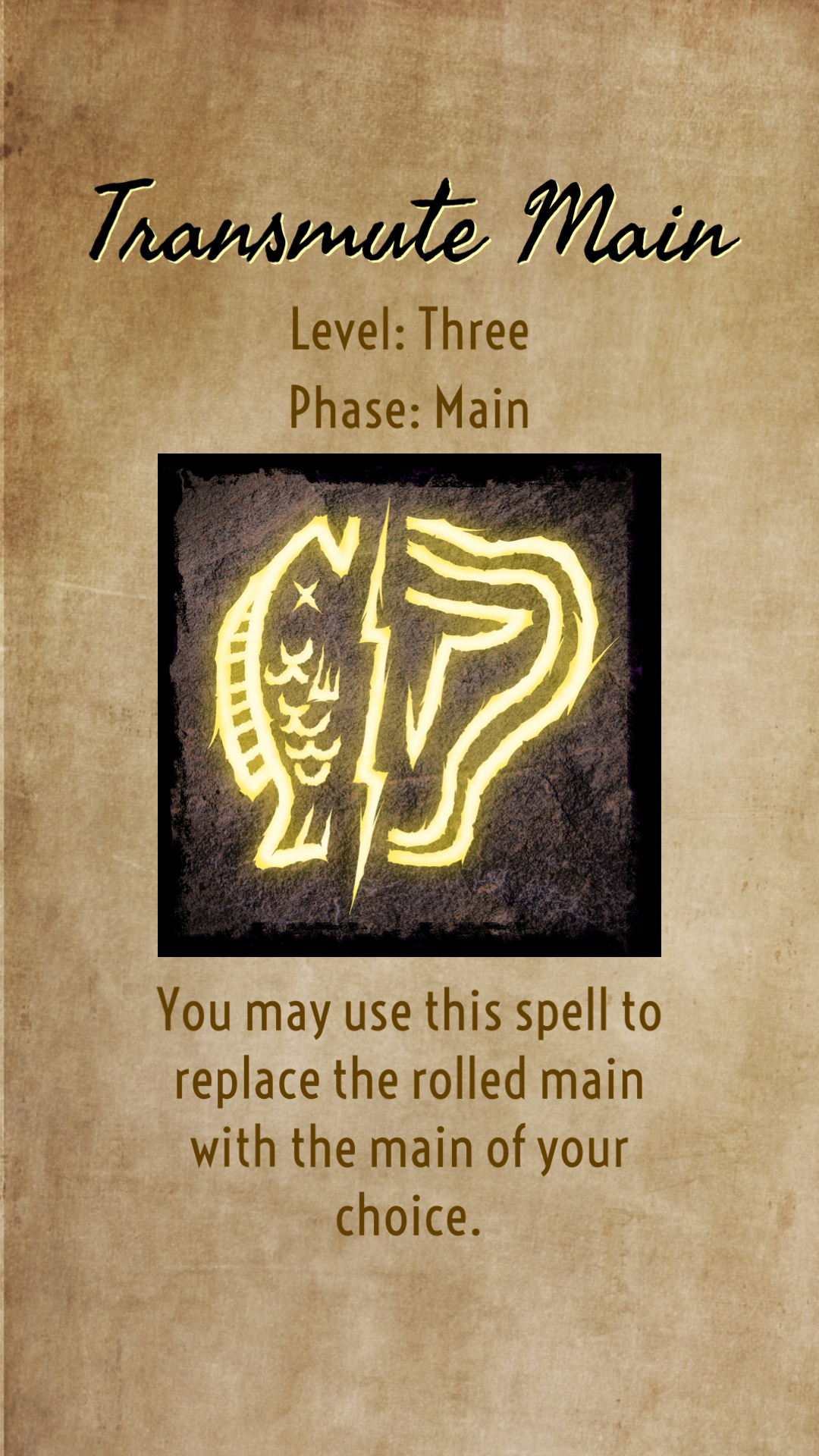
You may use this spell to replace the rolled sauce with the main of your choice.

You may use this spell to replace the rolled sauce with the sauce of your choice.

curses
While this curse is active, whenever you cast a leveled spell, roll a D6. On a 4-6 the spell is successful and Counterspell remains active. On a 1-3 the spell fails and the spell slot used is still used, then Counterspell is deactivated and can be discarded.
"CURSE" spreads to 1D4 other spots on the roll lists. Roll a D6 each time to determine which sheet.
You must roll the next smallest dice for each of your rolls.
Bread roll is automatically set to "None."
Sauce roll is automatically set to "Extra Ketchup."
You may not cast spells while this curse is active.
"During the next Wild Magic Phase, roll twice. Add both results to the sandwich."
Locked!
Choose one of your available spells. It is banished until next season.
Locked!




